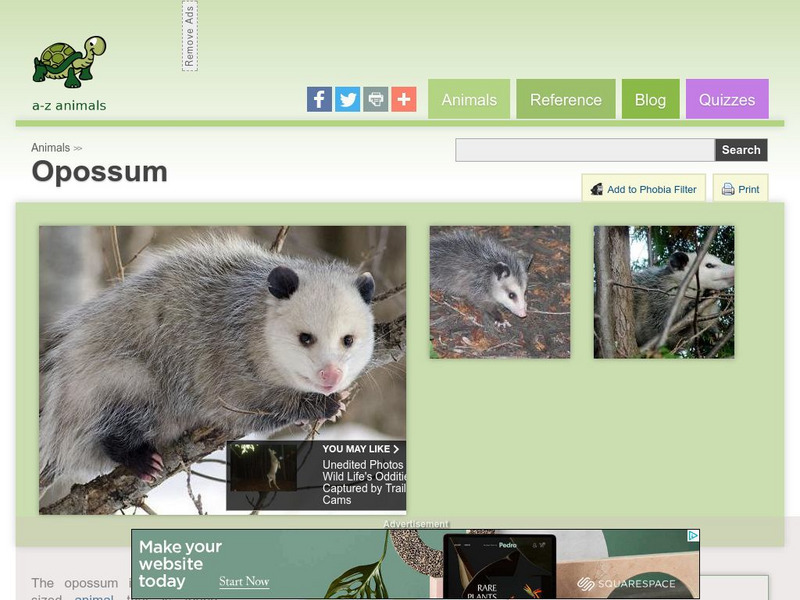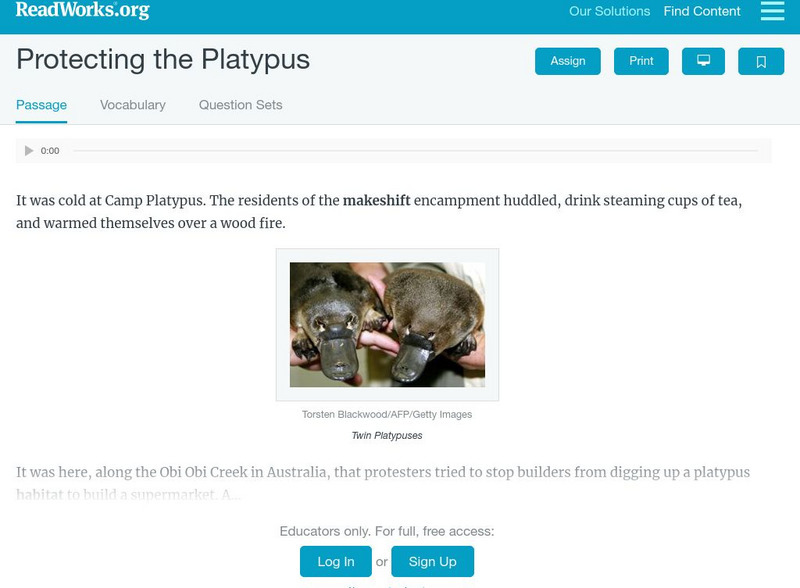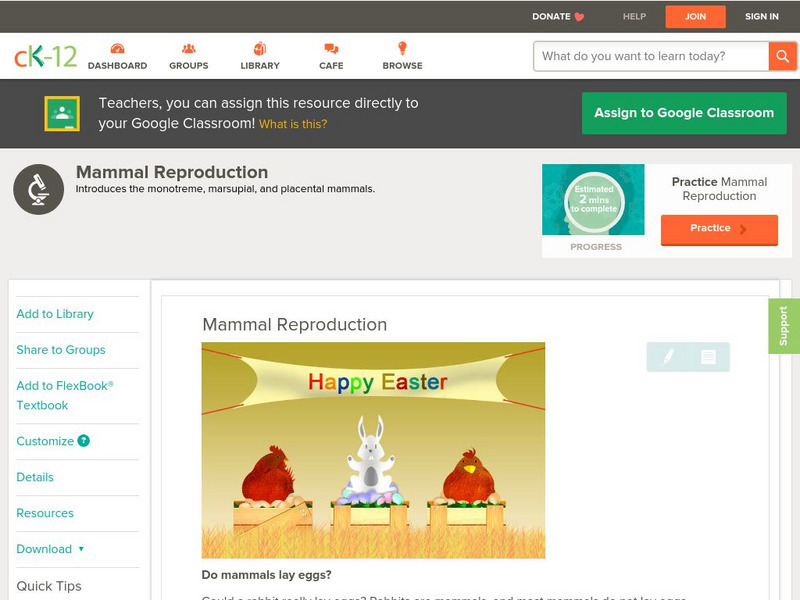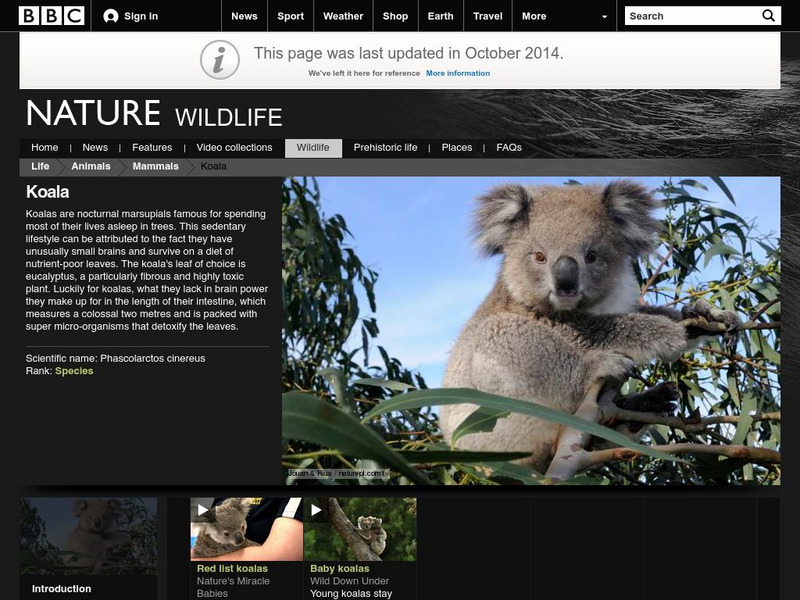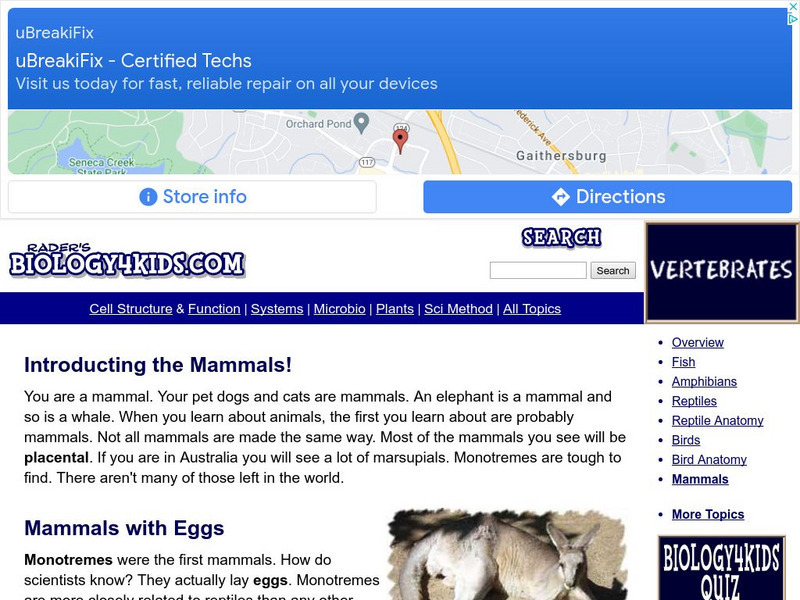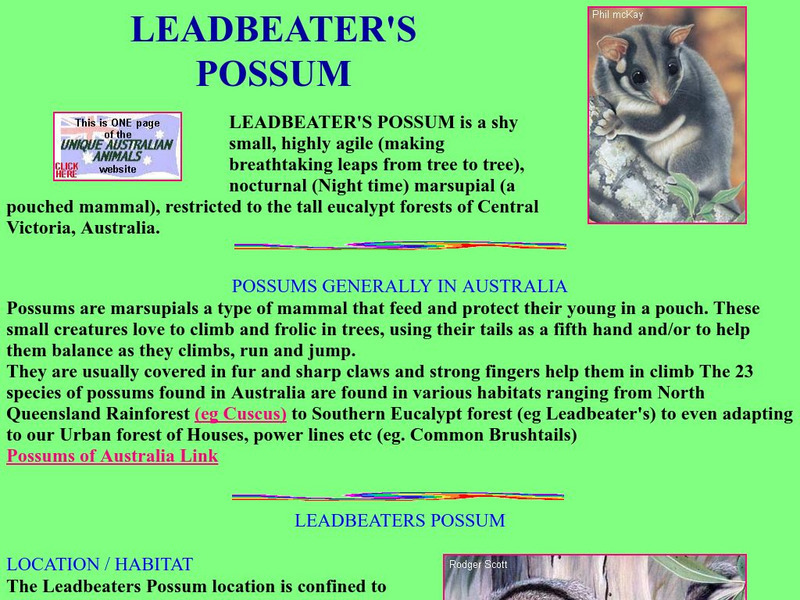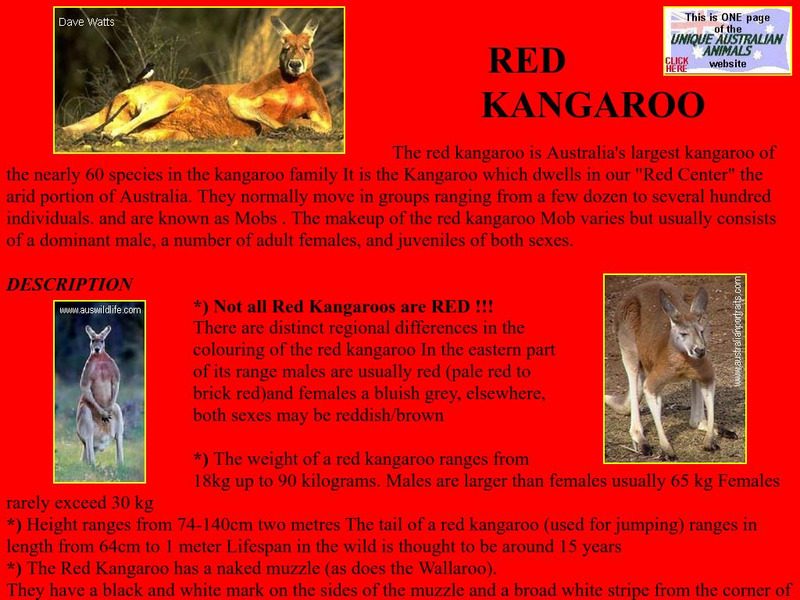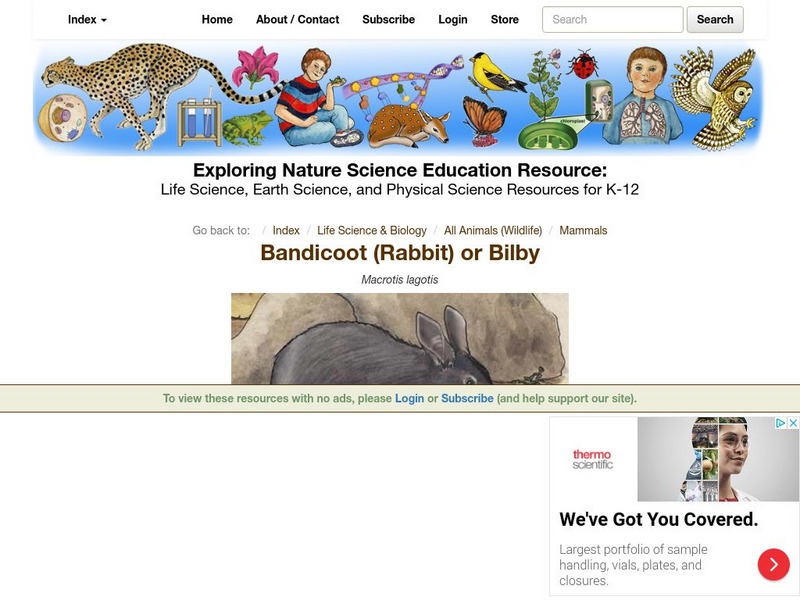Curated OER
Diversity of Mammals
In this mammals instructional activity, high schoolers compare and contrast the three types of mammals: placental, marsupial, and monotreme. This instructional activity has 4 short answer, 12 matching, and 8 fill in the blank questions.
Curated OER
Mammals
In this mammals worksheet, students review terms associated with the different types of mammals. This worksheet has 6 fill in the blank and 4 matching questions.
National Geographic Kids
National Geographic Kids: Animals: Koala
"Koalas are marsupials, related to kangaroos." Fun facts, video and audio clips make this a great National Geographic site for student research projects.
Regents of the University of Michigan
Animal Diversity Web: Isoodon Marcrourus
This site provides a detailed overview of the Large Short-Nosed Bandicoot, also known as the the northern brown bandicoot. Content includes a focus on this animal's physical characteristics, geographic range, food habits, behavior,...
A-Z Animals
A Z Animals: Animal Facts: Opossum (Didelphis Virginiana)
Provides photographs and a fact card about the opossum, not to be confused with the possum. Discusses where they are found, habitat, the threat of rabies, diet, predators, and reproduction.
A-Z Animals
A Z Animals: Animal Facts: Possum (Phalangeriforme)
Provides photographs and a fact card about the possum. Discusses where they are found, the range of species, physical characteristics, habitat, behavior, diet, predators, mating and reproduction, and population status.
A-Z Animals
A Z Animals: Animal Facts: Quokka (Setonix Brachyurus)
Provides photographs and a fact card about the quokka, a marsupial. Discusses where they are found, their classification, anatomy and physical characteristics, distribution and habitat, behavior, lifestyle, reproduction and life cycle,...
A-Z Animals
A Z Animals: Animal Facts: Quoll (Dasyurus Viverrinus)
Provides photographs and a fact card about the quoll, a marsupial. Discusses where they are found, their lifestyle, diversity, diet, predators, and development after birth.
Read Works
Read Works: Protecting the Platypus
[Free Registration/Login Required] An informational text about the platypus and efforts being made to protect it and its habitat. A question sheet is available to help students build skills in reading comprehension.
Read Works
Read Works: The Koala Search
[Free Registration/Login Required] An informational text about koalas, why they are endangered, and what is being done to protect them. A question sheet is available to help students build skills in reading comprehension.
CK-12 Foundation
Ck 12: Life Science: Mammal Reproduction
[Free Registration/Login may be required to access all resource tools.] Mammals don't typically lay eggs, but monotremes are the exception. All other mammals give birth to live young and belong to one of two categories, the marsupials...
BBC
Bbc: Nature Wildfacts: Eastern Grey Kangaroo
BBC Wildfacts profiles the eastern kangaroo of Australia with photographs and a fact sheet.
TED Talks
Ted: Ted Ed: The Three Different Ways Mammals Give Birth
Kate Slabosky details the placental, marsupial, and monotreme methods of giving birth.
San Diego Zoo Global
San Diego Zoo: Kids: Tasmanian Devil
Colorful resource for learning fun facts about Tasmanian devils with photographs as well as information regarding their physical characteristics and unique features.
Canadian Museum of Nature
Canadian Museum of Nature: Kangaroos
Get to know the Kangaroo.. colored photos, description, life cycle, map of habitat, food. Only the basic details of this marsupial are given, making this site perfect for younger researchers.
Unique Australian Animals
Unique Australian Animals: Sugar Glider
Sugar Glider, scientifically called Petaurus breviceps, is a small arboreal gliding possum, and a type of marsupial mammal.
Biology 4 kids
Biology4 Kids: Introducing the Mammals
What different types of mammals exist in the world? Peruse this information about mammals that lay eggs, mammals with pouches, and those that give birth to live animals.
CK-12 Foundation
Ck 12: Biology: Evolution of Early Mammals
[Free Registration/Login may be required to access all resource tools.] Overview of the evolution of monotreme, marsupial, and placental mammals.
Unique Australian Animals
Unique Australian Animals: Leadbeater's Possum
Unique Australian Animals profiles the marsupial mammal Leadbeater's possum with photos and text.
Unique Australian Animals
Unique Australian Animals: Red Kangaroo
This article, illustrated with many photographs, profiles the red kangarook, Australia's largest kangaroo from nearly 60 species.
Exploring Nature
Exploring Nature Educational Resource: Bandicoot (Rabbit) or Bilby
Information about the bandicoot, a small marsupial native to Australia. Discover what they eat, their body traits, reproduction patterns, and their classification.






